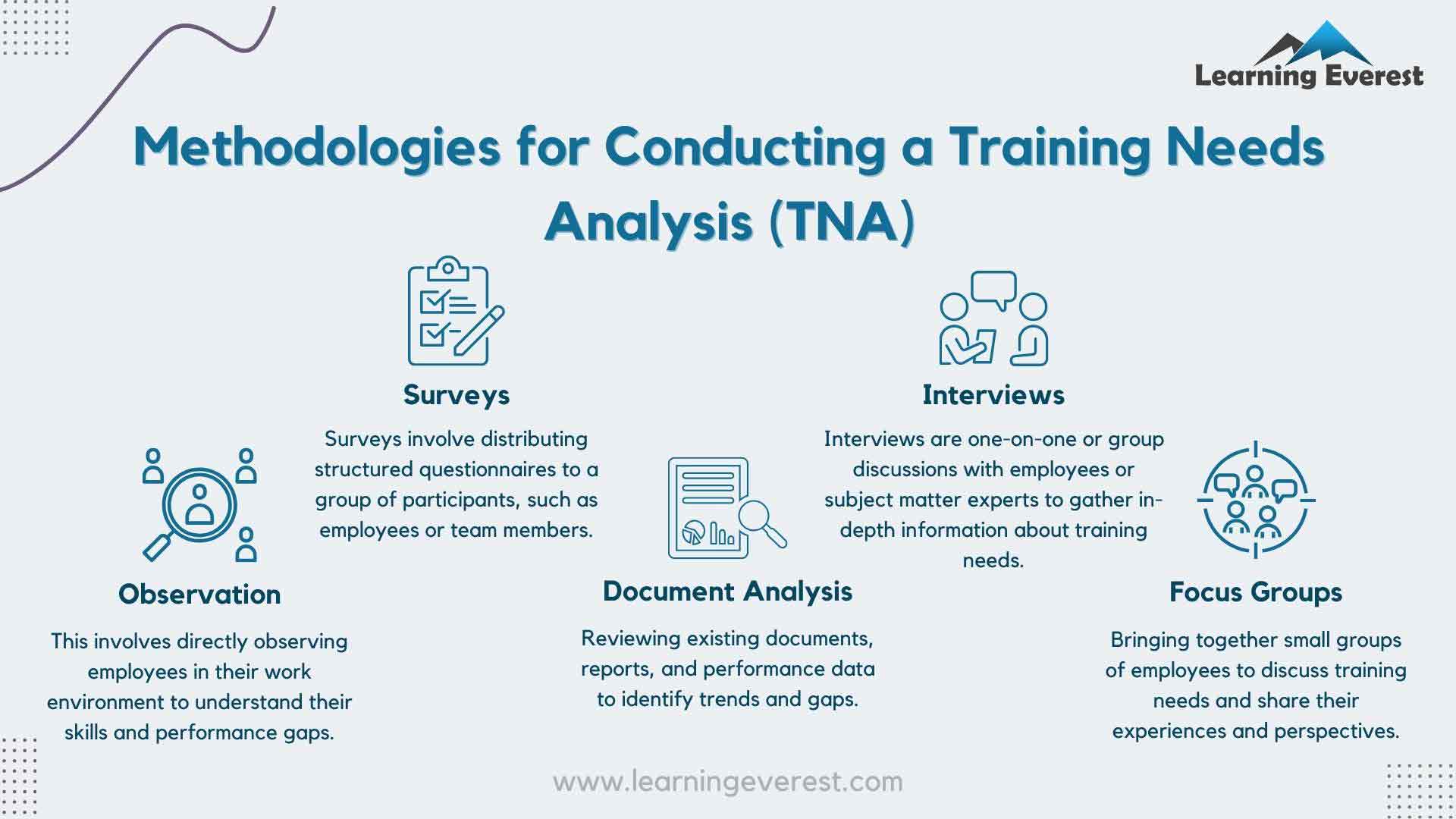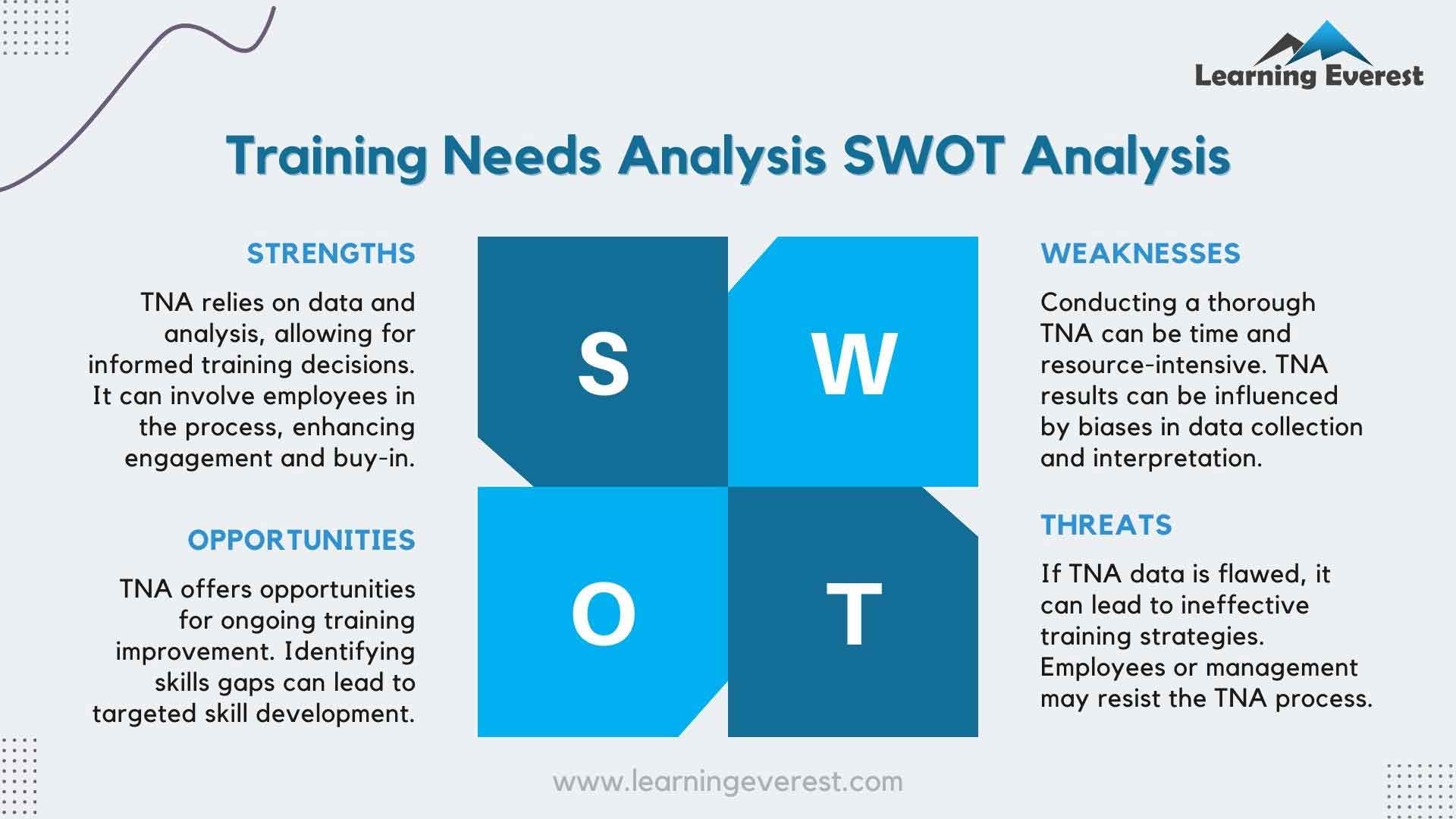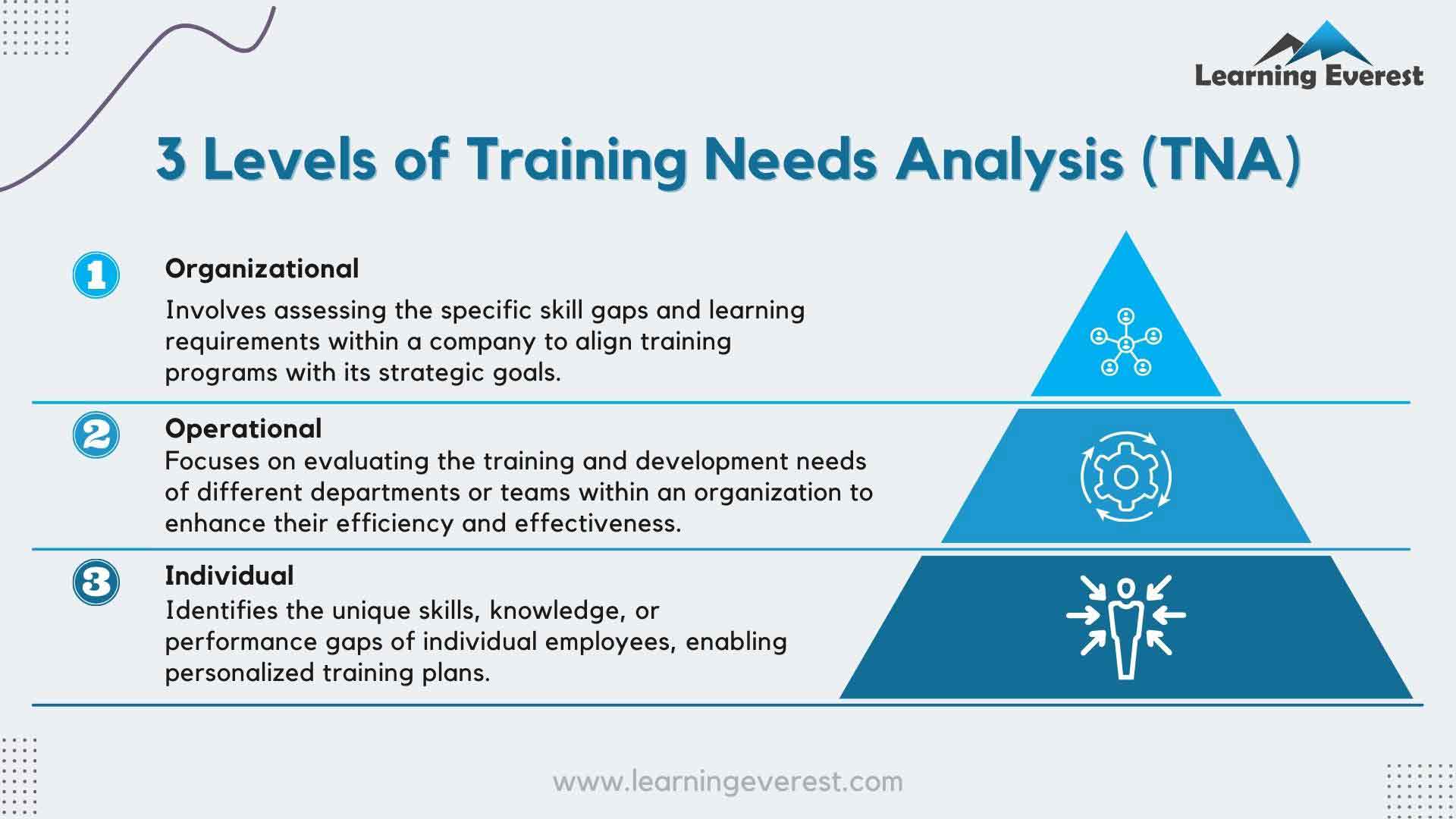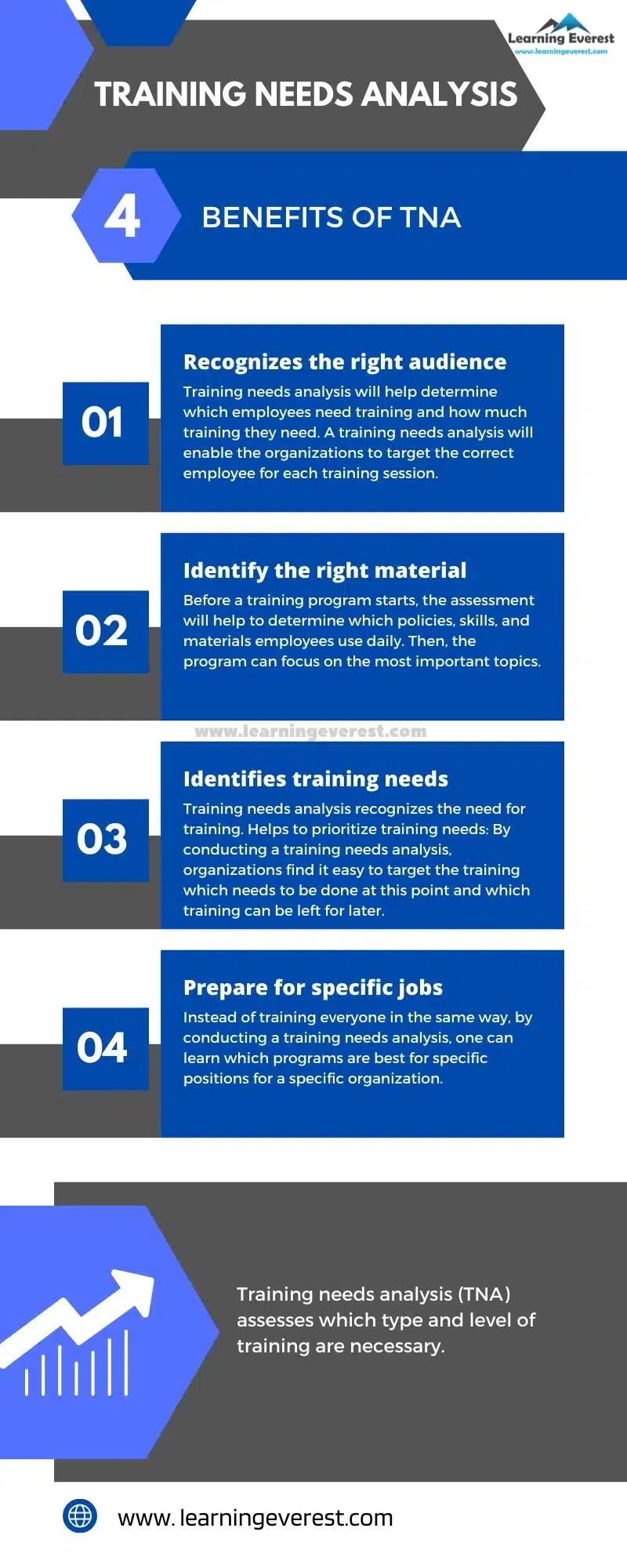What is TNA? Organizations need to conduct occasional training sessions for their employees. But how to conduct an effective training program to maximize the employees’ full potential? An effective training program considers questions like, who needs training? Who will do the training? What form will the training take? How will knowledge be transferred to the job? How will the training be evaluated? Therefore, a training program also needs analysis. The assessment of training needs is called training needs analysis. In this blog, we will have a brief introduction to training needs analysis.
Table of Contents
- टीएनए (प्रशिक्षण आवश्यकता विश्लेषण) क्या है?
- Why is TNA (Training Needs Analysis) required?
- Three levels of analysis
- How to conduct a well-aligned training needs analysis (TNA)?
- Infographics
- Knowledge Check!
- Conclusion
- Frequently Asked Questions (FAQs)
- What does TNA mean?
- Why is TNA important?
- What are the three levels of training needs analysis?
- How is a TNA used?
What is TNA (Training Needs Analysis)?
Training needs analysis (TNA) assesses which type and level of the training program are necessary. It is a way of gathering data and information in a structured manner to effectively design and implement a training and development program for organizations and individuals. Organizations can implement this type of analysis at any level of training if they identify the need for organizational changes.
Training needs analysis (TNA) defines and prioritizes the most significant areas of need by identifying performance and skill gaps. It also generates data for evaluation and determines the costs and benefits of training, and evaluates Return on Investment (ROI). Therefore, it increases the potential of the organization to achieve its goals and objectives and, in the process, improves employee morale.
To sum up, the primary purpose of a training needs analysis (TNA) is to identify and expand the individualized or institutionalized experience that is held by employees, to identify and improve the ability of individuals or teams to complete tasks at their required levels and to identify and foster the behaviors and attitudes essential to the culture and performance of the organization.

Methodologies for conducting a Training Needs Analysis (TNA)
Why is TNA (Training Needs Analysis) required?
A 2015 report on workplace training by 24×7 Learning Inc. found that just 11% of employees can fully use the training in their job. This statistic shows a significant disconnect between what the training organizations offer and what their employees need. Conducting a training needs analysis is therefore essential to get the following advantages:
- Recognizes the right audience: Training needs analysis will help determine which employees need training and how much training they need. A training needs analysis will enable the organizations to target the correct employee for each training session, ensuring everyone follows a personalized training plan to get the most benefit possible.
- Uses the proper method: A good training needs analysis will tell if there is a need for a new training program or if an alternative solution would be better. It will also determine the right method of training the employees. It also addresses the resources required to fulfill the organizational mission, improve productivity, and provide quality products and services.
- Identify the right material: Before a training program starts, the assessment will help to determine which policies, skills, and materials employees use daily. Then, the program can focus on the most critical topics. It identifies performance goals and the knowledge, skills, and abilities needed for the workforce to achieve the desired goal.
- Identifies training needs: Often, employers believe they know what their employees need to know, but there could be gaps in their knowledge. An assessment will help validate the training requirement. Training needs analysis recognizes the need for training. Helps to prioritize training needs: By conducting a training needs analysis, organizations find it easy to target the training which needs to be done at this point and which training can be left for later.
- Prepare for specific jobs: Instead of training everyone in the same way, by conducting a training needs analysis, one can learn which programs are best for particular positions for a specific organization. It lets the employees upskill in their jobs at a faster rate and creates significant opportunities for their economic mobility.
- Structural improvement: Training needs analysis gives a structure to the program conducted by a series of studies. The analysis helps to conduct the training program in a structural manner.

SWOT of TNA
Three levels of analysis
There are three levels of training needs analysis (TNA): organizational analysis, operational analysis, and individual analysis. Now let us discuss them in detail.
- Organizational analysis: Training needs analysis is diagnosed by analyzing organizational outcomes and looking at future organizational needs. When doing an organizational analysis, it is essential to consider how internal and external variables can affect training. Training needs analysis at this level would start with a review of the organization’s strategic and operational plans.This level of analysis also incorporates things such as an organization’s culture, HR objectives, and external influences.
- Operational analysis: A second level of analyzing training needs involves reviewing the jobs and tasks performed. Comparing employees’ skills in a job category to the skills needed for a successful job performance can recognize the gaps that training can fill.This type of analysis usually means reviewing the competency needs and skill sets within a team against the team’s objectives and desired business objectives. It will involve considering the needs of individuals and anything that can help the organization to work together as effectively as possible.
- Individual analysis: The third level of diagnosing training needs focuses on individuals and how they perform their jobs. The most common approach of individual analysis involves using performance appraisal data to assess training needs. Through the performance appraisal process, a supervisor first determines an employee’s performance strengths and inadequacies in a formal review.
Then the supervisor can design training to help the employee overcome their weaknesses and enhance their strengths.It contributes to determining what needs to be improved, whether through a training program they must take or other ongoing professional development. Because the trainees are in an excellent position to identify training needs, getting this kind of input can help gain support for the training program from people who needs training.

Three Levels of Training Needs Analysis
How to conduct a well-aligned training needs analysis (TNA)?
To conduct a proper training needs analysis:
- First, it is essential to identify the problem and the need for training analysis. Training needs analysis recognizes the gap in the training program.
- Next, it is essential to determine the design of the training needs analysis. It determines the type and level of training.
- Then, the task is to collect data about the employees and organization for the training needs analysis.
- After that, one should analyze the collected data. While most organizations can uncover enough data to start building a training strategy through the approach of surveys/ questionnaires, leadership and management interviews, and focus groups, some may opt for others, such as tests, assessments, advisory committee reports, observations, and the like.
- Next, it is essential to provide feedback related to the training program. It contributes to determining what needs to be improved.
Infographics
Knowledge Check!
Conclusion
A training needs analysis (TNA) can be helpful if done correctly. It evaluates the existing skill levels of the organization, team, and employees. The employees get more motivated, perform better, and have higher job satisfaction as a result. Additionally, it increases revenue, customer happiness, engagement, and engagement levels while decreasing waste, which increases productivity for the organization.
Frequently Asked Questions (FAQs)
What does TNA mean?
TNA stands for Training Needs Analysis.
Why is TNA important?
Training needs analysis defines and prioritizes the most significant areas of need through identifying performance and skill gaps.
What are the three levels of training needs analysis?
There are three sources used to analyze training needs: organizational analysis, operational analysis, and individual analysis.
How is a TNA used?
Training needs analysis (TNA) recognizes the need for training. By conducting a training needs analysis, organizations find it easy to target the training needed at this point and which training can be left for later.






